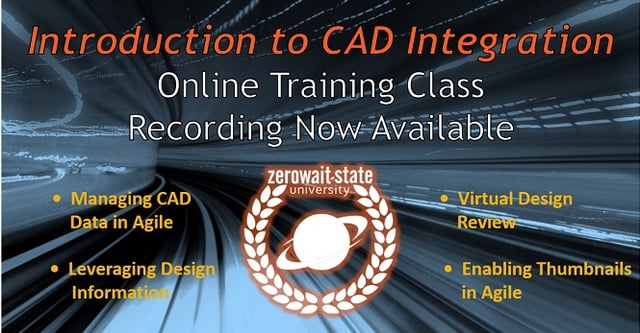It is easy to get caught up in the excitement of the latest craze. We all want to believe there is some new thing that is going to transform our lives or company for the better and lead us on a path to riches. Sometimes these new things have merit, but you have to make sure you are in a position to capitalize on what they offer, especially when it comes to product development. Buzzwords like Cloud, Innovation, IoT (Internet of Things) have been flying around and companies are eagerly ready to embrace these trends without making sure they are able to benefit from the offering. If you’re all dressed up with nowhere to go, then what’s the point? In my last post,"The PLM State: All Dressed Up and Nowhere to Go Part I, PLM Training Shortfalls", I discussed how surprising it is to see companies spending so much money on PLM software and services yet unwilling to invest an adequate amount in training to fully capitalize on their investment. This article will focus especially on innovation management and IoT and what is needed to fully capitalize on these solutions for discrete manufacturing companies. Ask yourself one question: do I want to just talk about innovation or actually do it?
In an article titled “Innovation: The Most Important Overused Word in America” by Michael D. Bryan from Wired, the author states, “We lose sight of the specific skills and behaviors needed to be innovative.” The article goes on to point out that “innovation is the key to our future and politicians, executives, scholars and educators have rightly pushed for it at many different levels.” So the takeaway is that innovation requires specific skill and is important. The article goes on to describe the traits needed for innovation but misses the key ingredient, in my opinion: execution. All the creative ideas in the world mean little if you lack the ability to execute. Companies are so fixated on the sexy payback of ideation and new product development that they neglect the more mundane engineering process required to turn these ideas into tangible products. In an article titled “Stop Me Before I innovate Again” by Bill Taylor in the Harvard Business Review, Mr. Taylor describes companies that “aspire to do extraordinary things develop a vocabulary of competition that captures the impact they’re trying to have, the difference they’re trying to make and the future they’re trying to create.” What this means is that they are focused on how they are going to pull this off which requires execution.
Innovation and the management of the process are good things, but a tightly coupled and efficient engineering organization must be in place to reap the benefits of this activity. Developing ideas in a vacuum or trying to build one-off processes to move forward with innovation is a surefire path to failure. In the context of product development and Product Lifecycle Management (PLM), engineering should be closely aligned with manufacturing. The output of engineering should be fully consumable by manufacturing with minimal tweaking. Having silos and disconnects will quickly nullify any gains from innovation if you can’t get to market efficiently. A surprising number of discrete manufacturing companies have failed to address this disconnect, yet they are now eagerly pursuing innovation because it is the latest buzzword and captures the imagination of the C-suite. I would suggest this enthusiasm and energy be harnessed to optimize the engineering-to-manufacturing relationship, which will benefit not only innovation initiatives, but the entire organization.
IoT is a similar phenomenon. Having electronic integration for products that offers real-time analytics for quality and feedback from consumers is very appealing. This type of automation will allow companies to deliver a higher quality user experience, which in turn, will tie customers more closely to product development organizations. The higher value delivered should yield higher margins and drive innovation. Again, if you cannot master the fundamentals of file management and change control, how in the world are you going to develop real-time interfaces to products in the field? The solution is not to develop processes that circumvent traditional product development and engineering process, but to build fully integrated processes that ultimately will support these advanced initiatives. Crawl, Walk, Run. This approach does not necessarily play well with vendors attempting to capitalize on these new trends, but before you get caught up in the euphoria of these new offerings, make sure your company has the fundamentals in place to benefit from the investment.
A great article series exists on ZD Net titled “Innovation: How to be a World Changer”. One of the articles sites that 92% of the companies surveyed recognize innovation as being critical to the success of their organizations. Making sure that you have all the pieces in place to bring innovation to market is key if you want to win in your market. Efficiency and communication are necessary to capitalize on new technology like Innovation Management and IoT. Make sure your plans and strategy include a hard look at the fundamentals of your business process and that you have done everything possible to streamline your engineering and manufacturing process before you embark on pursuing these new shiny coins.
Speaking of coins (see what I did there), you don't need any money to join our first training class, Introduction to CAD Integration. Seating is limited to make sure all students have access to our expert trainers.



